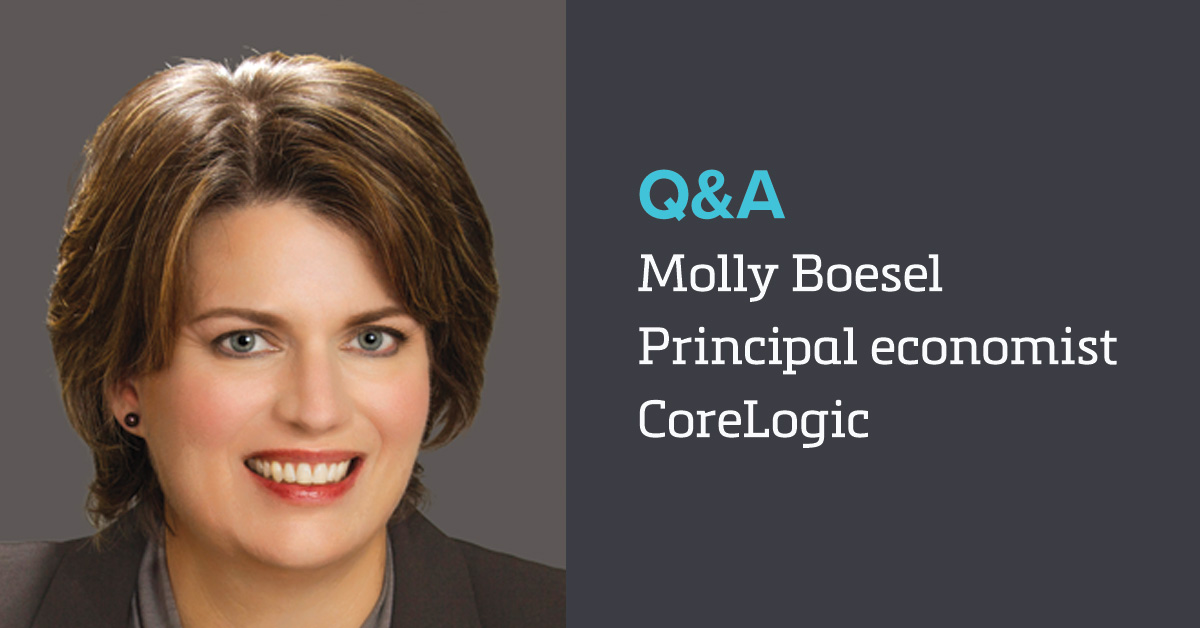A decade ago, Wall Street investors scooped up tens of thousands of distressed and foreclosed U.S. homes, turning them into rental properties. Today, the single-family rental market is still going strong, but the market has changed.
Data analytics company CoreLogic tracks single-family rental trends in major cities across the country. Economist Molly Boesel, the company’s resident expert on the single-family rental space, spoke with Scotsman Guide about how this market has evolved and where it is headed.
How many single-family rental properties are there in the U.S.?
The latest data from the U.S. Census Bureau is through 2015, but I don’t think things have changed too much. We are talking about 20 million single-family rental properties. That makes up about 40% of all rental units. Let’s not look at buildings with two to four units. If we look at the number of units in five-plus unit buildings, it is also about 20 million. So, there are as many one-unit rental properties as there are units in five unit-plus buildings. People don’t realize that it is about half the rental market.
Are investors still buying and converting houses to rental properties?
During the foreclosure crisis, there was a lot of investment going on. Since there is not a large scale of foreclosures happening right now, maybe we would think that there wasn’t any investment in single-family rentals. But CoreLogic put out a report on investor homebuying this [past] summer and found that 11% of home purchases in 2018 were to investors. That is very similar to what it was in 2012 to 2014. So, investors are still out there buying properties. One big thing we found in this study was that, whereas before it was large-scale investors buying up foreclosures, now it is smaller-scale investors, what we might call the mom-and-pop investors.
How have single-family rentals performed in regard to rent prices and occupancy levels?
The year-over-year increase in rents is about 3%. It has been fluctuating a little, but it has been a slow and steady increase.
The vacancy rates for all rental units, that’s multifamily and single family, are very, very low — 6.8% for the second quarter of 2019. It has been at about that level since 2015. For context, from 2003 to 2010, the rental vacancy rate was about 10%. So, right now, vacancy levels are incredibly low. We think of the supply shortage in the home-sale market, but I don’t know that a lot of people realize that there is a supply shortage in the rental market.
Where are the strongest markets for rentals?
We focus on 20 metros where we have the strongest data. The highest rent increases have been in the desert Southwest. Phoenix, Las Vegas and Tucson [Arizona] have had rent increases way above the rest of the country. Other places, like Orlando, have seen a really high rise in rents. The rents are really increasing in areas with a lot of migration and where there are strong job gains.
Has this market changed from what it was a decade ago?
Before and during the housing crisis, it really was the large institutional investors that came in and bought a lot of foreclosures, and converted them to rentals. Now it’s what I would call the mom-and- pop investor. Investors with fewer than 100 properties are the ones in the market now. So, yeah, it has changed.
There is also a new single-family build-to-rent model. Communities are being built around the country that you would have thought were for entry-level buyers. They’re actually single-family homes that have been built to rent out. I think it is a really interesting model and I keep getting questions about it.
Wouldn’t that prove that many renters are demanding single-family rentals over traditional apartments?
That is correct. They want the advantage of living in a single-family house, but without the mortgage. Maybe they don’t know how long they are going to be there. That is why we talk about rents increasing and rental markets being really strong in areas where there has been a lot of job growth. Somebody is going to move into a new city and not immediately purchase something. They’ll start off renting.
Author
-

Victor Whitman is a contributing writer for Scotsman Guide and a former editor of the publication’s commercial magazine.
View all posts






